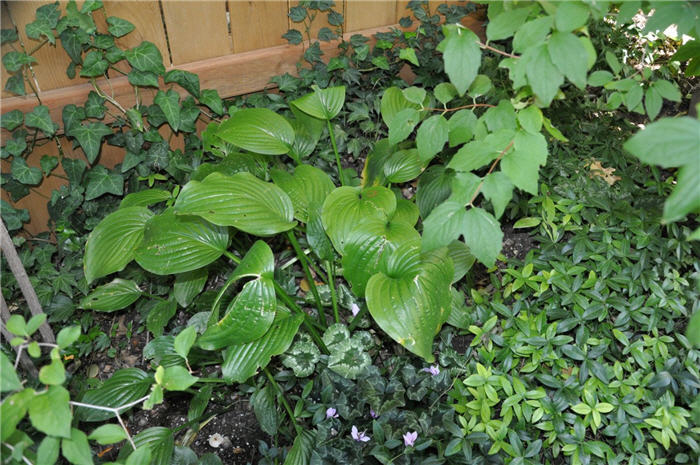| Botanical Name: Hosta | |
| Common Name: Hosta |

-
Anatomy
-
Culture
-
Design
Plant Type
Ground cover, Perennial
Height Range
Under 1', 1-3'
Flower Color
Pink, Purple, Violet, White
Flower Season
Summer
Leaf Color
Gold, Green, Blue Green, Dark Green, Light Green, Yellow Green, Yellow, Variegated
Bark Color
n/a
Fruit Color
n/a
Fruit Season
n/a
Sun
Half, Shade
Water
Medium, Extra in Summer
Growth Rate
Moderate, Slow
Soil Type
Loam
Soil Condition
Average, Rich, Well-drained
Soil pH
Neutral
Adverse Factors
n/a
Design Styles
English Cottage, Formal, Japanese, Woodland
Accenting Features
Fragrance, Unusual Foliage
Seasonal Interest
Summer
Location Uses
Entry, Perennial Border, Shrub Border, Foundation, Patio, Walkways
Special Uses
Container, Cut Flowers, Mass Planting, Small Spaces
Attracts Wildlife
Hummingbirds
Information by: Stephanie Duer
Photographer:
Photographer:
-
Description
-
Notes
Hosta are herbaceous perennials, hardy to Zones 3 or 4, depending on the variety. Sometimes referred to as the plantain lily, hosta have fleshy roots and short spreading rhizomes; in spring broad leaves emerge from a central crown and develop into a mounded form. Leaves come in colors from bright green to gold and even blue tones; some have variegated leaves, with strips, blotches, or margins of varying shades of green, white, cream or gold. Leaf texture varies and can be smooth, veined, or even puckered. Leaf size ranges from petite (a few inches long) to gigantic (a few feet long). Descriptions such as heart-shaped, lance-like, and cupped characterize different leaf shapes. Depending on growing conditions and variety, individual plants range in size from six inches high and a foot or less across to 3 to 4 feet high and 5 to 6 feet across. Although hosta flowers are sometimes discounted as secondary, they can provide great ornamental value. The flower stalks, known as racemes, hold bell-like blossoms of white or lavender to blue. Some flowers are exceptionally fragrant as well as attractive to hummingbirds and bees. Use as an understory plant in the shady shrub or foundation border, or under trees, or in the shady perennial garden.
Grow in well drained soil in part shade to full shade to dappled light. Some varieties are listed as being suitable for full sun, but in our hot, dry climate, they all benefit from some mid-day sun protection. Ideally, provide a loamy soil, amended with organic material. Remove spent flower scapes after blooming to encourage more flowering and for a tidy appearance. In early spring, remove spent foliage, taking care to watch for new foliage emerging from the crown. Though not thought of as a "water-wise" plant, Hosta do remarkably well in dry part-shade to full-shade conditions, and are frequently the victim of over-watering, succumbing to crown or root rot.